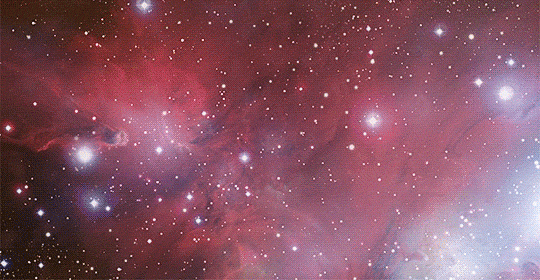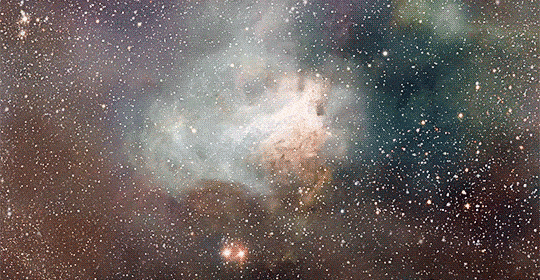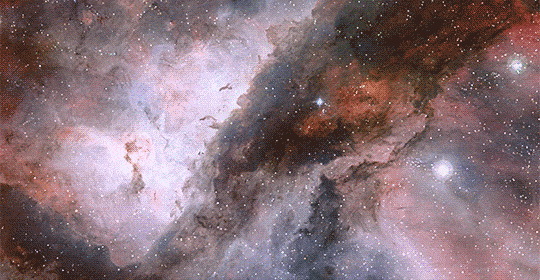More Than You Ever Wanted To Know About Mechanical Engineering: Strain Energy For Some Common Situations
More Than You Ever Wanted to Know About Mechanical Engineering: Strain Energy for Some Common Situations
Last time, we talked about strain energy - the energy that is stored when an object undergoes deformation due to applied stress. We worked out a general expression for strain energy density (the amount of strain energy stored per unit volume):

Note that this is easily convertible to overall strain energy - we would just have to integrate strain energy density over the volume of the object to get total strain energy.

The dV here is just the product of dx, dy, and dz (like regular volume is the product of x, y, and z). Or, you could say it’s the product of the cross-sectional area (dA) and dx.

Bearing this in mind, we can easily get some simple expressions for strain energy in some familiar situations.
Keep reading
More Posts from Lanas-own-blog and Others



Is it too late to jump on the pumpkin-everything bandwagon?
Select pumpkin images from our Seed Catalogs collection




Flying Across The Universe Part 2 (From Top to Bottom: Cone Nebula, Omega Nebula, Carina Nebula, and Lupus 3)
(Part 1)
Credit: ESO.org

Milky Way over Bear Lake in Rocky Mountain National Park, CO
js
Space Launch System

Our Space Launch System (SLS) is an advanced launch vehicle for exploration beyond Earth’s orbit into deep space. SLS, the world’s most powerful rocket, will launch astronauts in our Orion spacecraft on missions to an asteroid and eventually to Mars!

A launch system required to carry humans faster and farther than ever before will need a powerful engine, aka the RS-25 engine. This engine makes a modern race car or jet engine look like a wind-up toy. With the ability to produce 512,000 pounds of trust, the RS-25 engine will produce 10% more thrust than the Saturn V rockets that launched astronauts on journeys to the moon!

Another consideration for using these engines for future spaceflight was that 16 of them already existed from the shuttle program. Using a high-performance engine that already existed gave us a considerable boost in developing its next rocket for space exploration.
Once ready, four RS-25 engines will power the core stage of our SLS into deep space and Mars.

Hundreds of you sent in questions for my live conversation with three astronauts and NASA’s chief scientist on Tuesday. Thanks! The most common question was: “What happens when you get your period in space?”
I didn’t end up asking this question because
a) the question itself has a lot of historical baggage b) the answer is pretty boring
But because people seemed genuinely curious, I decided to answer it here.
First, a bit of history…
In the early days of space flight, menstruation was part of the argument that women shouldn’t become astronauts.
Some claimed (1) that menstruation would effect a woman’s ability, and blamed several plane crashes on menstruating women. Studies in the 1940s (2,3) showed this was not the case. Female pilots weren’t impaired by their periods. But the idea wouldn’t die. In 1964, researchers from the Women in Space Program (4) still suggested (without evidence) that putting “a temperamental psychophysiologic human” (i.e. a hormonal woman) together with a “complicated machine” was a bad idea.
Others raised concerns about hypothetical health risks. They feared that microgravity might increase the incidence of “retrograde menstruation.” Blood might flow up the fallopian tubes into the abdomen, causing pain and other health problems. No one actually did any experiments to see if this really would be a problem, so there wasn’t any data to support or refute these fears.
Advocates for women in space argued that there had been a lot of unknowns when humans first went to space, but they sent men up anyway. Rhea Seddon, one of the first six women astronauts at NASA, recalled during an interview:
We said, “How about we just consider it a non-problem until it becomes a problem? If anybody gets sick in space you can bring us home. Then we’ll deal with it as a problem, but let’s consider it a non-problem.”
Just to give you a sense of the culture surrounding female astronauts back then, here’s an excerpt of a 1971 NASA report about potential psychological problems in space. Researchers Nick Kanas and William Fedderson suggest there might be a place for women in space:
The question of direct sexual release on a long-duration space mission must be considered. Practical considerations (such as weight and expense) preclude men taking their wives on the first space flights. It is possible that a woman, qualified from a scientific viewpoint, might be persuaded to donate her time and energies for the sake of improving crew morale; however, such a situation might create interpersonal tensions far more dynamic than the sexual tensions it would release.
Kanas, now an emeritus professor of psychology at UCSF, told me this was tongue-in-cheek — part of a larger discussion about the problem of sexual desire in space (5). Still, it’s surprising this language was included in an official NASA memorandum. Even advocates for women in space were caught up in this kind of talk. In a 1975 report for the RAND corporation, Glenda Callanen argues that women have the strength and intelligence to become astronauts. But here’s how she begins the report’s conclusion:
It seems inevitable that women are to be essential participants in space flight. Even if they were only to take on the less scientific parts of the space mission, or if they wished only to help “colonize” distant planets, their basic skills must still prepare them to perform countless new tasks.
In a culture where these statements were unremarkable, it’s easy to imagine that questions about menstruation weren’t purely motivated by scientific curiosity.
In 1983, 22 years after Alan Shepard became the first American to go to space, Sally Ride left earth’s atmosphere. She told an interviewer:
I remember the engineers trying to decide how many tampons should fly on a one-week flight; they asked, “Is 100 the right number?” “No. That would not be the right number.”
So what DOES happen when you get your period in space?
The same thing that happens on Earth! In the last three decades years of female space flight, periods in space have been normal — no menstrual problems in microgravity.
Notes:
RE Whitehead, MD. “Notes from the Department of Commerce: Women Pilots.” The Journal of Aviation Medicine 5 (Mar-Dec 1934):48.
RS Holtz, MD. “Should Women Fly During the Menstrual Period?” The Journal of Aviation Medicine 12 (Sept 1941):302.
J Cochrane. “Final Report on Women Pilot Program.” 38.
JR Betson and RR Secrest. “Prospective women astronauts selection program.” American Journal of Obstetrics and Gynecology 88 (1964): 421–423.
Kanas and Fedderson’s 1971 report went on to conclude: “Information regarding women during periods of stress is scanty. This lack, plus previously mentioned problems, will make it difficult for a woman to be a member of the first long-duration space missions. However, it is just as unlikely to think that women cannot adapt to space. Initial exploration parties are historically composed of men, for various cultural and social reasons. Once space exploration by men has been successfully accomplished, then women will follow. In preparation for this, more information should be compiled regarding the physiology and psychology of women under stressful situations.”

Charon from a different angle
via reddit


“I probably cried more for this story than any other stories I’ve done,“ says the photographer. “There were some film producers and editors that I wanted to work with. I showed them [my] footage and they were like, ‘Oh, this is unusable. There’s so much shaking and sobbing in background.’ That was just me. It was a very emotional experience.”

-
 airyowl reblogged this · 9 years ago
airyowl reblogged this · 9 years ago -
 anushaspears liked this · 9 years ago
anushaspears liked this · 9 years ago -
 8240 liked this · 9 years ago
8240 liked this · 9 years ago -
 lanas-own-blog reblogged this · 9 years ago
lanas-own-blog reblogged this · 9 years ago -
 pense-livre liked this · 9 years ago
pense-livre liked this · 9 years ago -
 garyoakriginal liked this · 9 years ago
garyoakriginal liked this · 9 years ago -
 janiemcpants liked this · 9 years ago
janiemcpants liked this · 9 years ago -
 kliereo liked this · 9 years ago
kliereo liked this · 9 years ago -
 sunn-flowerz liked this · 9 years ago
sunn-flowerz liked this · 9 years ago -
 intotheblueyonder liked this · 9 years ago
intotheblueyonder liked this · 9 years ago -
 somebody-els3 liked this · 9 years ago
somebody-els3 liked this · 9 years ago -
 engineeringtldr reblogged this · 9 years ago
engineeringtldr reblogged this · 9 years ago
I've had lots of blogs in the past, but this one I'm actualy excited to share with people.
68 posts